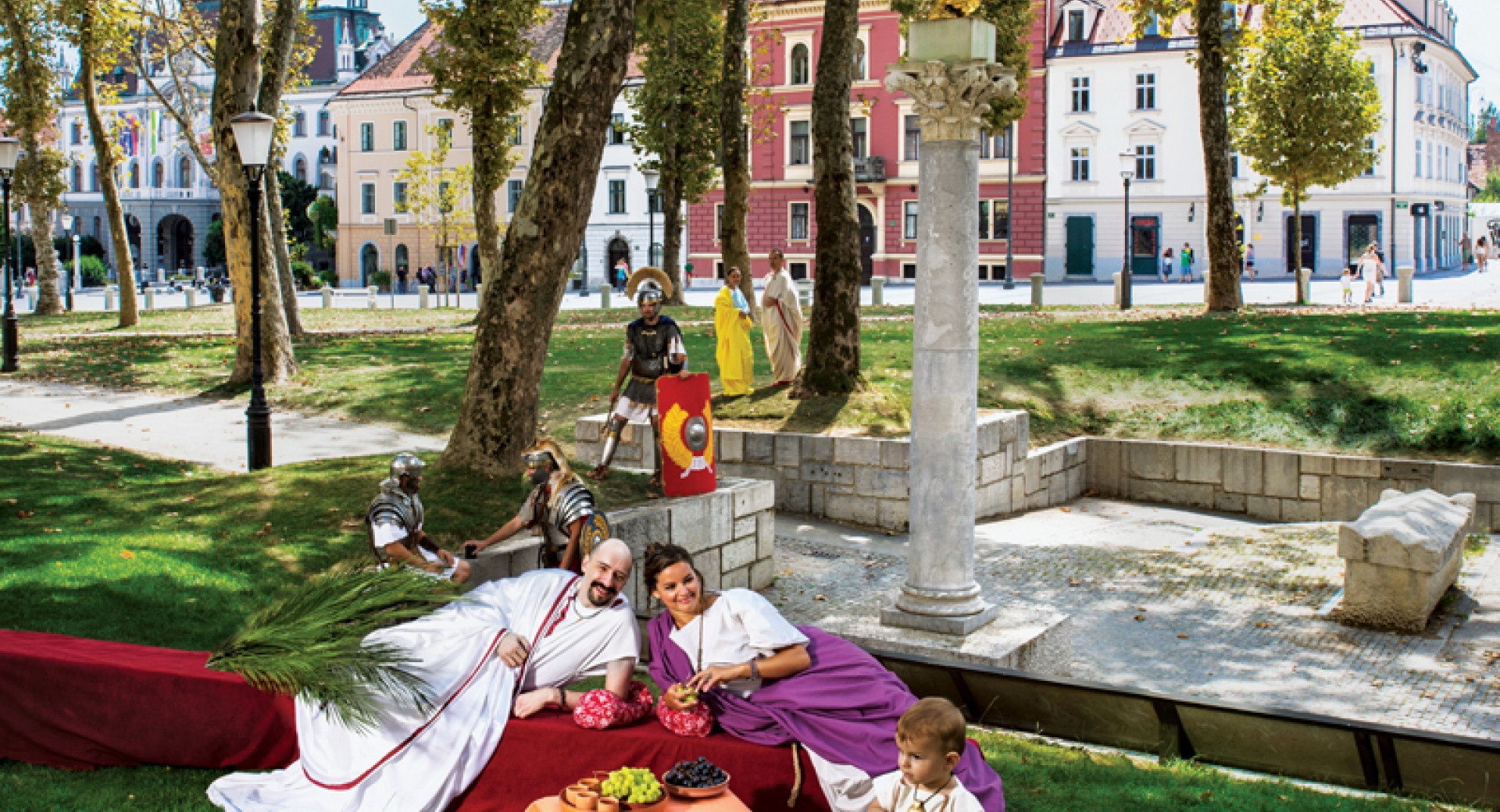Roman Ljubljana
Two thousand years ago, a Roman city called Emona stood on the site of the present-day Ljubljana. In 2014 and 2015, Ljubljana celebrated the 2000th anniversary of the Roman city's foundation.

"Salvete, grati nobis Emonam venitis" (Be greeted, you who have come to visit us here in Emona!)
A short history of Emona
In 14 AD, the Roman colony of Emona (Colonia Iulia Aemona) unquestionably already stood on the site of the present city centre of Ljubljana. This is evidenced by an inscription about a donation that the city received from the emperors Augustus and Tiberius. Due to its geographical position, Emona played an important role in the Roman Empire’s system of defence and flourished from the 1st to the 5th century AD. It was built on a Roman model and governed in accordance with Roman political and religious principles. It is believed to have been inhabited by around 5,000 colonists, whose occupations were agriculture, trade, and crafts.
The remains of Emona in the present-day Ljubljana
You can visit two archaeological parks managed by the City Museum of Ljubljana or join the museum's tour of the remains of the city walls of Emona in the Mirje area of Ljubljana. The walls were renovated in the 1930s to designs by the architect Jože Plečnik.
Emona covered a large part of the site of the present city centre of Ljubljana. Its main square, the Forum, occupied the area next to the junction between the present Slovenska cesta and Rimska cesta roads. A part of Emona's suburbs and one of its burial grounds were located on the site of the present-day Kongresni trg square and Zvezda Park, where a replica of a bronze statue representing an Emonan is on display next to an information board giving details on the excavation site. An interactive presentation titled iEmona can be viewed in the Chopinov podhod underpass next to Zvezda Park. Admission is free.
